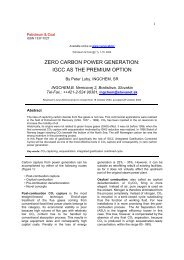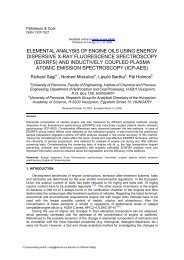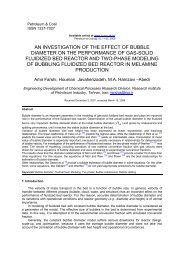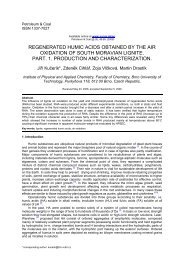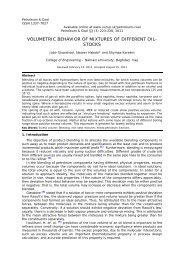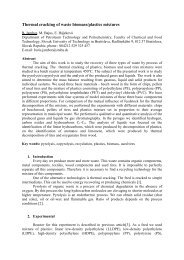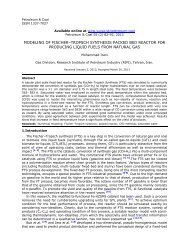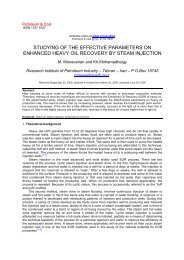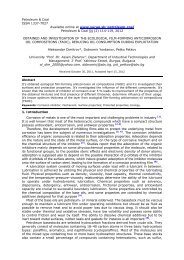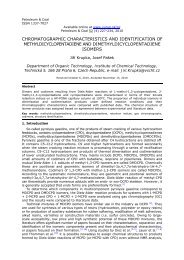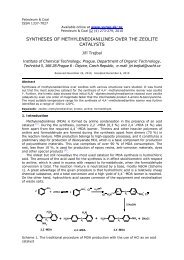permeability estimation and hydraulic zone pore structures
permeability estimation and hydraulic zone pore structures
permeability estimation and hydraulic zone pore structures
You also want an ePaper? Increase the reach of your titles
YUMPU automatically turns print PDFs into web optimized ePapers that Google loves.
Y. B. Adeboye, C. E. Ubani, K. K. Farayola/Petroleum & Coal 54(1) 52-58, 2012 57presented in Figure 5 is accurate. This curve can be used for comparisons, in this well, toTimur <strong>permeability</strong> <strong>estimation</strong>s <strong>and</strong> to statistical <strong>permeability</strong> with fewer core samples.5. ConclusionsFigure 5 Core log vs. log <strong>permeability</strong> in S<strong>and</strong>stone Reservoir1. A method has been found to link core plug <strong>permeability</strong> to well log measurements inrelational databases. Core plugs of approximately 20ml volume have a <strong>permeability</strong> valuewhich can be uniquely linked to log measurements.2. Well logs respond differently in different <strong>hydraulic</strong> <strong>zone</strong>s.3. If the entire range of <strong>permeability</strong> from all <strong>hydraulic</strong> <strong>zone</strong>s is included in a core - logdatabase, it is possible to predict <strong>permeability</strong> accurately enough to represent changes in<strong>permeability</strong> across a reservoir. Databases constructed at “key” wells can be used to predict<strong>permeability</strong> at offset wells.4. Permeability predictions are good in s<strong>and</strong>stone reservoirs if <strong>permeability</strong> is predictedby Kriging with a multi-dimensional database calibrated for each <strong>hydraulic</strong> <strong>zone</strong>.Permeability predictions from porosity-<strong>permeability</strong> transforms were of little value casestudy presented.5. St<strong>and</strong>ard gamma ray, density, <strong>and</strong> resistivity log suites <strong>and</strong> routine core analysesprovide enough data to predict <strong>permeability</strong> from well logs.Nomenclature:S wir = irreducible water saturation, %H c = <strong>hydraulic</strong> character, dimensionlessHZ = <strong>hydraulic</strong> <strong>zone</strong>k = <strong>permeability</strong>, (md)ϕ = porosity, fractionr 2 = goodness of fit correlationS pv 2 = specific surface area per unit <strong>pore</strong> volume, 1/cm



